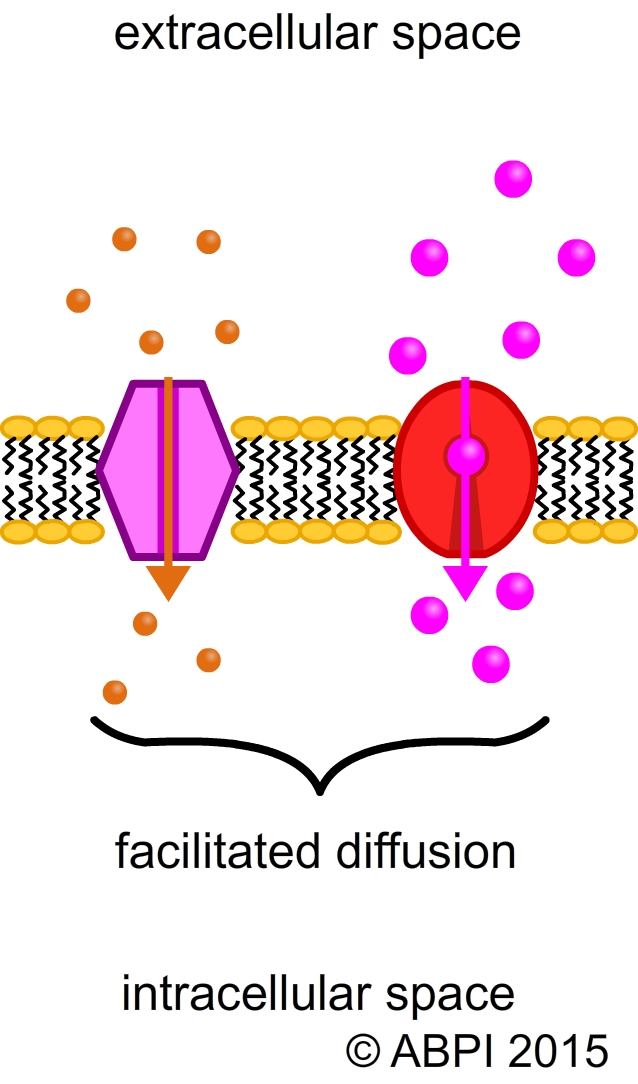This topic takes on average 55 minutes to read.
There are a number of interactive features in this resource:
 Biology
Biology
Everything that moves into and out of the cell has to pass through the cell membrane. Cell membranes are partially permeable. This means some substances pass through the membrane relatively easily but others cannot move through it without the input of energy from ATP. The properties of molecules affect how easily they are transported.
As a general rule:
There are a number of different ways in which transport across partially permeable cell membranes takes place:

Facilitated diffusion: diffusion that takes place down a concentration gradient through pores made by proteins that are integral to the structure of the membrane. Each channel is specific to the transport of a particular molecule or ion. These pores may be always present, or they may be gated, which means they can be open or shut depending on the environmental conditions.
Examples of substances that move into the cell by facilitated diffusion through gated channels are sodium ions (Na+), potassium ions (K+) and chloride ions (Cl-).
Facilitated diffusion also takes place using passive protein carrier molecules. It does not use ATP. The binding of the molecule to the carrier simply causes a change of shape which moves it through the membrane passively. Glucose and amino acids enter cells by facilitated diffusion using passive carriers.

The movement of water is very important in biological systems. Active transport can be used to accumulate solutes either side of a partially permeable cell membrane, changing the water potential. This results in the passive movement of water by osmosis in the required direction.
Animation showing diffusion, facilitated diffusion and osmosis across a cell membrane: